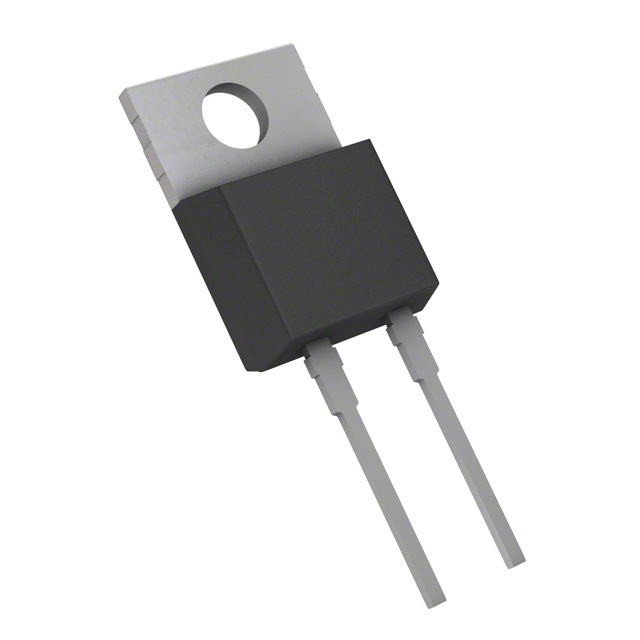Viz Specifikace pro podrobnosti o produktu.

FES16CT: Product Overview and Detailed Information
Introduction
FES16CT is a diode rectifier belonging to the category of semiconductor devices. This product is widely used in electronic circuits for its unique characteristics and reliable performance. In this entry, we will provide an overview of FES16CT, including its basic information, specifications, pin configuration, functional features, advantages and disadvantages, working principles, application field plans, and alternative models.
Basic Information Overview
- Category: Semiconductor Devices
- Use: Diode Rectifier
- Characteristics: High efficiency, low forward voltage drop, fast switching speed
- Package: TO-220AB
- Essence: Silicon Rectifier Diode
- Packaging/Quantity: Typically packaged in reels or tubes, quantity varies by manufacturer
Specifications
- Voltage Rating: 200V
- Average Forward Current: 16A
- Peak Forward Surge Current: 150A
- Operating Temperature Range: -65°C to +175°C
- Storage Temperature Range: -65°C to +175°C
Detailed Pin Configuration
The FES16CT diode rectifier has a standard TO-220AB package with three pins: 1. Anode (A) 2. Cathode (K) 3. Gate (G)
Functional Features
- Fast recovery time
- Low leakage current
- High surge current capability
- High reliability and ruggedness
Advantages and Disadvantages
Advantages
- High efficiency
- Fast switching speed
- Reliable performance
- Wide operating temperature range
Disadvantages
- Higher cost compared to standard diodes
- Larger physical size due to TO-220AB package
Working Principles
FES16CT operates based on the principle of rectification, allowing current to flow in only one direction. When a positive voltage is applied to the anode with respect to the cathode, the diode conducts, allowing current to flow. Conversely, when a negative voltage is applied, the diode blocks the current flow.
Detailed Application Field Plans
FES16CT is commonly used in the following applications: - Power supplies - Battery chargers - Motor drives - Inverters - Welding equipment
Detailed and Complete Alternative Models
Some alternative models to FES16CT include: - FES8DT: 800V, 8A diode rectifier - FES20GT: 200V, 20A diode rectifier - FES10LT: 1000V, 10A diode rectifier
In conclusion, FES16CT is a versatile diode rectifier with high efficiency, fast switching speed, and reliable performance. Its wide range of applications and availability of alternative models make it a popular choice in electronic circuits.
[Word count: 387]
Seznam 10 běžných otázek a odpovědí souvisejících s aplikací FES16CT v technických řešeních
What is FES16CT?
- FES16CT refers to a Fast Recovery Rectifier Diode with a current rating of 16A and a voltage rating of 200V.
Where can FES16CT be used in technical solutions?
- FES16CT can be used in various technical solutions such as power supplies, inverters, motor drives, and other applications requiring rectification of AC to DC.
What are the key specifications of FES16CT?
- The key specifications of FES16CT include a maximum forward voltage drop of 1.15V, a maximum reverse leakage current of 10μA, and a maximum junction temperature of 150°C.
How does FES16CT compare to other rectifier diodes?
- FES16CT offers fast recovery times and low forward voltage drop, making it suitable for high-frequency applications and reducing power losses.
Can FES16CT handle high currents?
- Yes, FES16CT has a high current rating of 16A, making it suitable for applications requiring high current rectification.
What are the typical applications of FES16CT in technical solutions?
- Typical applications of FES16CT include AC/DC converters, freewheeling diodes, snubber circuits, and other power electronics applications.
Does FES16CT require heatsinking?
- Depending on the application and operating conditions, FES16CT may require heatsinking to dissipate heat effectively.
Is FES16CT suitable for automotive applications?
- Yes, FES16CT is suitable for automotive applications such as alternator rectification and motor drive systems.
What are the storage and operating temperature ranges for FES16CT?
- FES16CT has a storage temperature range of -65°C to 175°C and an operating temperature range of -55°C to 150°C.
Are there any recommended layout considerations when using FES16CT in a circuit?
- It is recommended to minimize loop inductance and provide adequate thermal management when designing circuits using FES16CT to ensure optimal performance and reliability.

